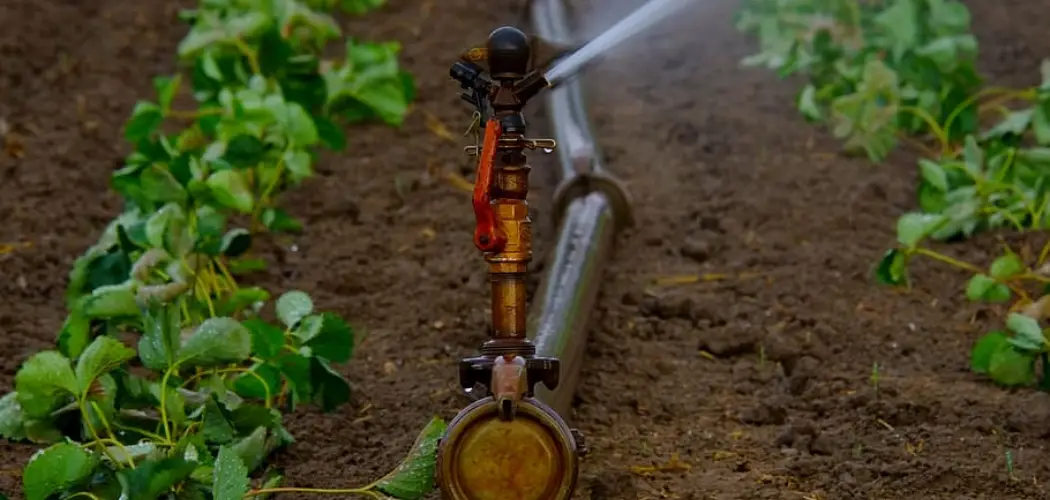Having a reliable irrigation system for your garden, plants or fields can be essential for successful growing conditions. The last thing you want is to go out and start digging aimlessly in search of water pipes – especially when you’re dealing with a large plot! Fortunately, locating the lines that run from an irrigation system doesn’t have to be so difficult.
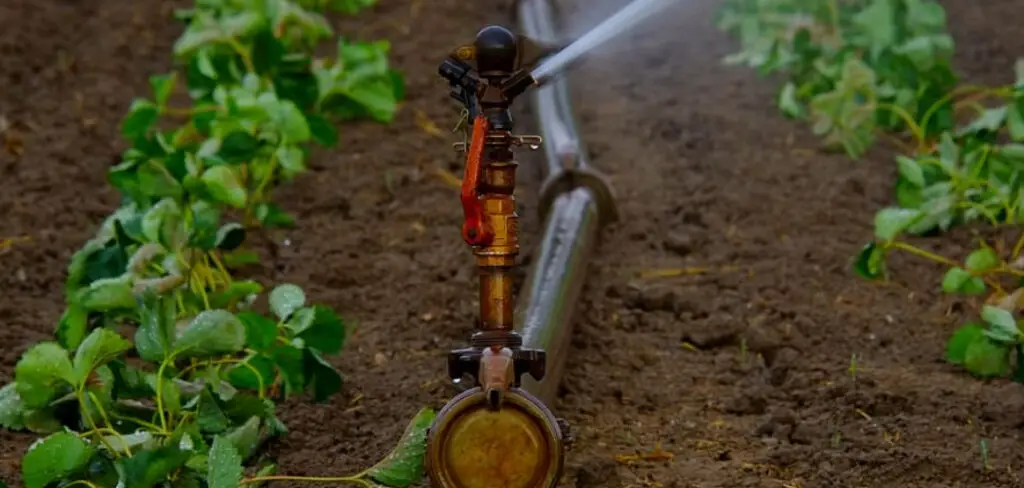
In this blog post we will discuss several effective ways for finding these buried water supply lines quickly and easily, saving time and effort. Whether you’re looking specifically for underground plastic pipes or trying to trace electrical wires leading into the pump controller box, this guide provides simple answers on how to find irrigation lines.
If you are looking for a way to improve the productivity and efficiency of your backyard irrigation system, one of the best ways is to find out where your irrigation lines are at. This can be a difficult task if you have never done it before, but with some guidance, it can be much easier to accomplish.
By understanding what tools and materials you need, how to determine the location of existing lines in your yard, and having an idea about which direction water might travel through underground pipes – finding irrigation lines does not have to be a daunting job! In this blog post, we’ll provide detailed instructions on how you can locate existing irrigation systems buried beneath your lawn so that you may begin improving their effectiveness right away.
Why May You Want to Find Irrigation Lines?
1. To Improve the Productivity of the Backyard Irrigation System
One of the most common reasons for wanting to locate irrigation lines is to improve the productivity of a backyard irrigation system. By knowing where the lines are located, you can more easily repair them, replace parts, and make other improvements that will help your system work better.
2. To Avoid Damaging Irrigation Lines
Another reason you may want to find irrigation lines is to avoid accidentally damaging them while you’re working in the yard. It can be easy to dig or otherwise disturb an underground line without knowing it, so being aware of where the lines are located can help prevent any accidental damage.
3. To Connect a New Sprinkler System
If you’re installing a new sprinkler system, it’s important to know where any existing irrigation lines are located. Connecting a new system to an existing line can help reduce the amount of additional piping and wiring needed for the project.
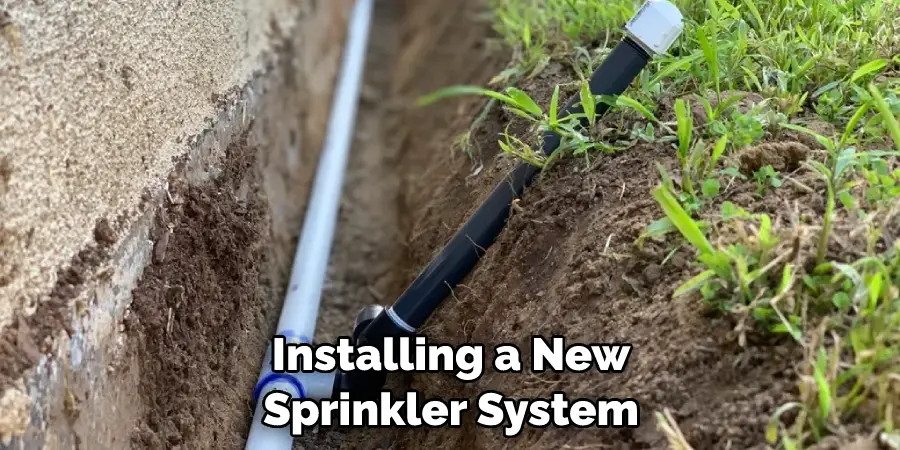
4. To Re-route an Existing Line
Finally, you may want to find your existing irrigation lines in order to re-route them around a new landscaping feature, such as a flower bed or fountain. This can help ensure that your existing line isn’t blocked and will continue to provide water to the desired areas in your yard.
Knowing where your irrigation lines are located can be an invaluable asset for maintaining and improving your backyard irrigation system. By being aware of the lines, you can avoid damaging them and make sure that your system is working as efficiently as possible.
10 Methods Of How to Find Irrigation Lines
In order to locate irrigation lines, there are several methods you can use. Such as:
1. Use an Edger or a Metal Detector
One of the most common methods for locating irrigation lines is using an edger or a metal detector. It’s important to note that the edger’s blade must be sharp enough to make contact with the line, otherwise, it won’t work. Similarly, if you use a metal detector, make sure its sensitivity setting is adjusted appropriately.
2. Look for Spikes in the Ground
Another method to use is looking for spikes in the ground. As sprinkler systems are installed, spikes are driven into the ground and they can help you find where irrigation lines run between them.
3. Digging and Excavation
Digging or excavation may be required if you cannot locate your irrigation lines with the methods mentioned above. Although this may take more time and effort, it is also an effective way to find irrigation lines.
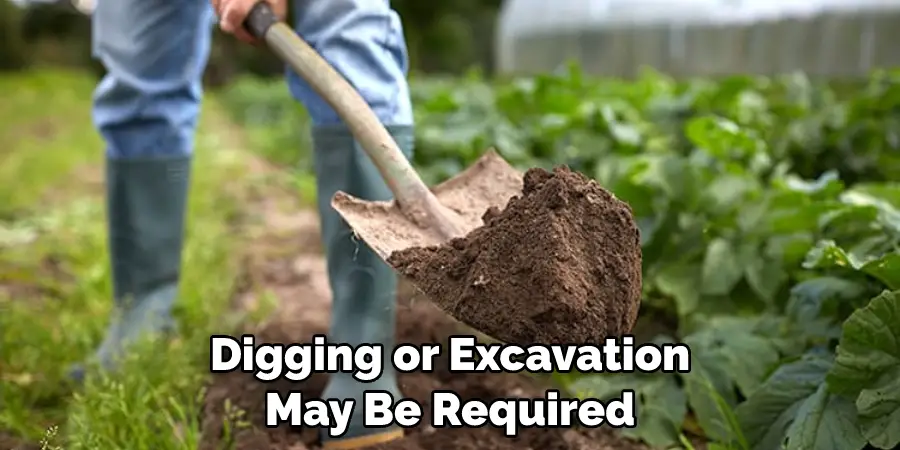
4. Use a Borescope
You can use a borescope to see what’s underneath your lawn. This device allows you to view images that are captured by a small camera at the end of the borescope’s long cord.
5. Consult a Plumber or an Irrigation Contractor
Consulting with a plumber or an irrigation contractor can also be helpful if you can’t find your irrigation lines. They have the right tools and expertise to help you locate them quickly and efficiently. Also, they can give you advice on how to maintain your sprinkler system.
6. Ask the Previous Homeowner
If you have just moved into a new home, you can always ask the previous homeowner about where their irrigation lines are located. They may be able to provide you with useful information and directions as to where they are.
7. Use a GPS
Using a GPS can also be an effective way of finding your irrigation lines. Not only will it tell you exactly where the lines are, but it will also provide you with directions on how to get there.
8. Check for Excess Water in Your Yard
When looking for irrigation lines, check for any excess water in your yard. The presence of water can be an indication that there are irrigation lines nearby.
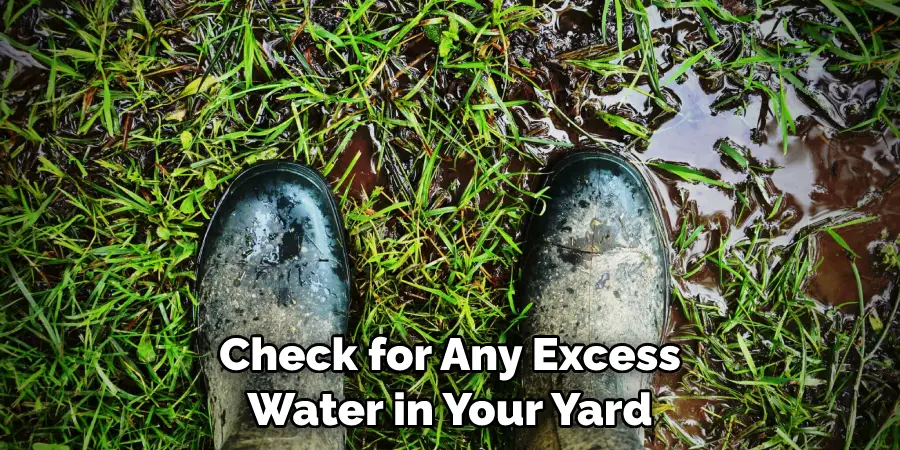
9. Use a Backhoe
Using a backhoe is another reliable method for finding your irrigation lines. This heavy-duty machine can dig deep into the ground, allowing you to locate irrigation lines quickly and easily.
Also, make sure to take safety precautions when operating the backhoe.
10. Check for Discoloration in Your Yard
Checking for discoloration in your yard can also help you locate irrigation lines. If there is an area of your lawn that looks different from the rest, it could be because of an irrigation line running underneath it.
Using any of these methods should give you a good idea of the location of your irrigation lines. However, if you are still having trouble finding them, it’s best to consult with a professional for help. They will be able to provide you with more accurate information and can even offer maintenance services for your sprinkler system.
Frequently Asked Questions
What Precautions Should I Take When Finding Irrigation Lines?
When locating irrigation lines, it is important to take the necessary safety precautions. Wear protective gear such as gloves, safety glasses, and a face mask when digging or excavating. Avoid any contact with electrical wiring and be wary of potential hazards such as underground gas or water lines. Call ahead if you suspect any of these potential issues. Always hire a professional to locate and repair irrigation lines whenever possible.
What Should I Do If I Can’t Find the Irrigation Line?
If you cannot find your irrigation line, you can call a local plumber or landscaping company that may have access to special equipment that can help you locate the line. If this is not an option, you can try to find a contractor who specializes in locating buried lines and pipes. Finally, if none of these options are available to you, you may need to contact your local utility company for assistance.
What Are Some Common Causes of Hidden Irrigation Lines?
Hidden irrigation lines can be caused by a variety of factors, such as changes in soil conditions, flooding, or erosion. In some cases, they can also be covered up by new landscaping or construction projects. Make sure to check the area for any potential obstructions before conducting your search.
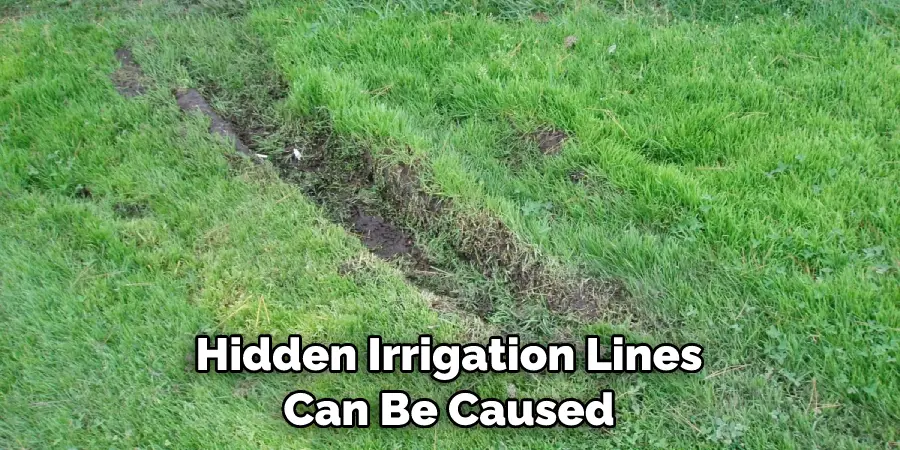
What Are Signs That an Irrigation Line May Be Present?
Common signs that an irrigation line may be present include patches of dead grass, areas of excessively wet soil, or water pooling. You may also see signs of damage such as cracks in the ground or exposed piping. If you notice any of these indicators, it is important to investigate further and call a professional if necessary.
What Is the Best Way to Locate an Irrigation Line?
The best way to locate irrigation lines is to start by visually assessing the area. Look for signs such as exposed piping or grass that appears greener than the surrounding area. If you suspect there is a line present, you can use a metal detector or ground-penetrating radar device to confirm your suspicions. Hiring a professional to locate and repair the line is highly recommended for the best results.
What Are Some Tips for Increasing the Efficiency of My Irrigation System?
To increase the efficiency of your irrigation system, make sure to check it regularly for any signs of leaks or blockages that could be causing water loss. Also, consider installing a soil moisture sensor or an evapotranspiration controller to help regulate water usage. Finally, make sure your sprinklers are adjusted so that they do not water sidewalks or areas with dense foliage. By following these guidelines, you can ensure your irrigation system is running as effectively and efficiently as possible.
Conclusion
Now you know how to find irrigation lines! Overall, if you need to find irrigation lines in your yard or garden, there are a few things to keep in mind. First, know the type of system you are working with, as this will help determine how deep the lines may be and which methods work best for finding them. You can use both visible markings and non-visible methods to identify irrigation lines.
If you choose to probe for the lines using a special metal rod, be careful not to accidentally break them in the process. A vacation detector or pipe locator can also be used to trace liquids and wires that may be beneath the surface. Lastly, if all else fails, contact a professional and experienced landscaper who will have the knowledge and resources necessary to help locate the irrigation lines on your property.
About
Outdoor Fixes is a distinguished figure in the world of Diy design, with a decade of expertise creating innovative and sustainable Diy solutions.
His professional focus lies in merging traditional craftsmanship with modern manufacturing techniques,
fostering designs that are both practical and environmentally conscious. As the author of diy,
outdoorfixes delves into the art and science of outdoorfixes-making, inspiring artisans and industry professionals alike.
Education RMIT University
(Melbourne, Australia) Associate Degree in Design (Outdoor Fixes) Focus on sustainable design, industry-driven projects,
and practical craftsmanship. Gained hands-on experience with traditional and digital manufacturing tools, such as CAD and CNC software.
Nottingham Trent University
(United Kingdom) Bachelor’s in outdoorfixes.com and Product Design (Honors) Specialized in product design with a focus on blending creativity with production
techniques. Participated in industry projects, working with companies like John Lewis and Vitsoe to gain real-world insights.
Publications and Impact
In diy, Outdoor Fixes his insights on indoor design processes, materials, and strategies for efficient production.
His writing bridges the gap between artisan knowledge and modern industry needs, making it a must-read for both budding designers and seasoned professionals.

